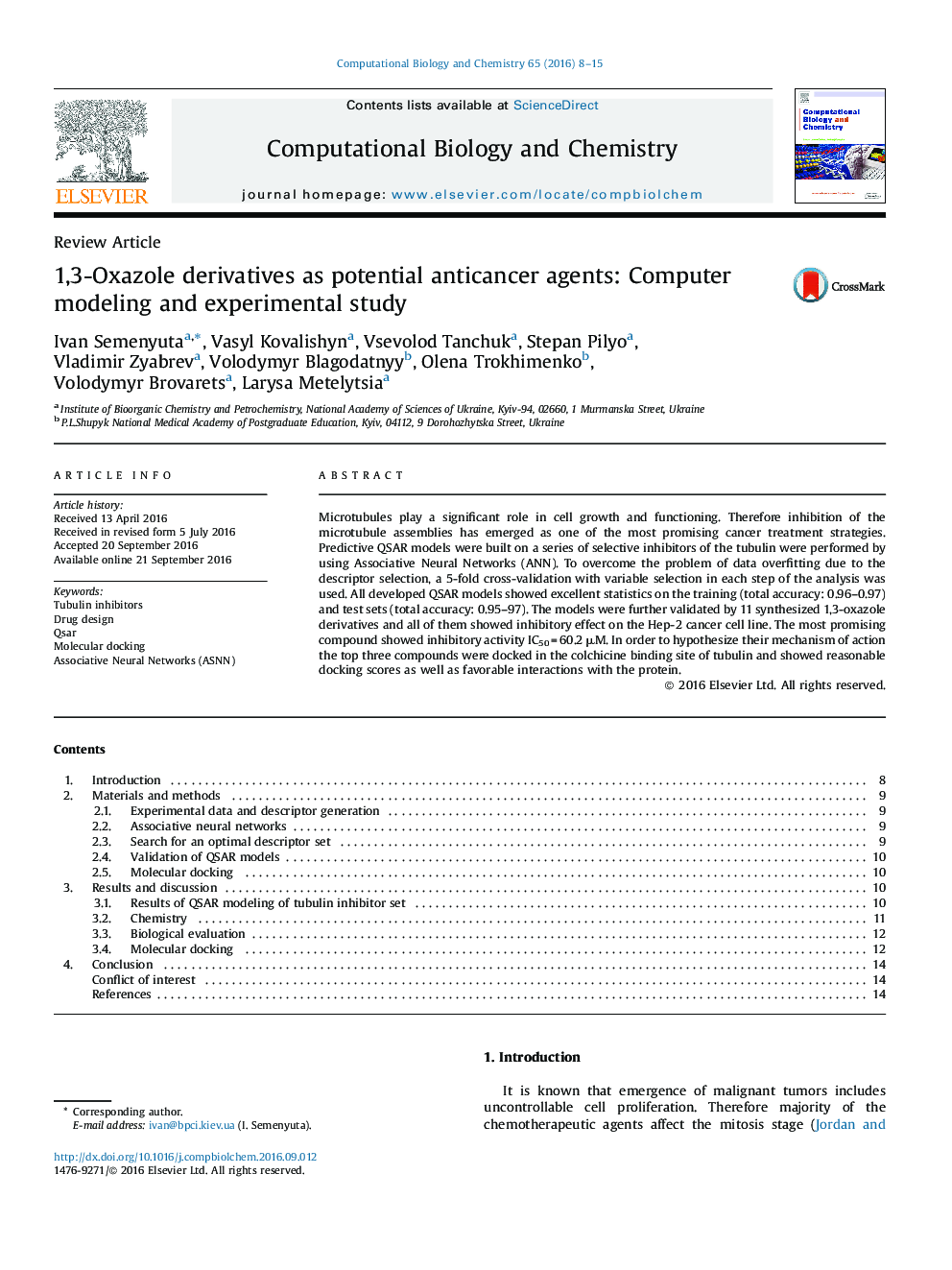| کد مقاله | کد نشریه | سال انتشار | مقاله انگلیسی | نسخه تمام متن |
|---|---|---|---|---|
| 6451249 | 1416282 | 2016 | 8 صفحه PDF | دانلود رایگان |
- A series of new predictive QSAR models is presented.
- Artificial Neural Networks used to build QSAR models.
- The models demonstrated good predictive ability.
- Cytotoxic activity of 3 compounds against Hep-2 cell line was the highest.
- Docking studies of 3 compounds predict their binding to the colchicine binding site of tubulin.
Microtubules play a significant role in cell growth and functioning. Therefore inhibition of the microtubule assemblies has emerged as one of the most promising cancer treatment strategies. Predictive QSAR models were built on a series of selective inhibitors of the tubulin were performed by using Associative Neural Networks (ANN). To overcome the problem of data overfitting due to the descriptor selection, a 5-fold cross-validation with variable selection in each step of the analysis was used. All developed QSAR models showed excellent statistics on the training (total accuracy: 0.96-0.97) and test sets (total accuracy: 0.95-97). The models were further validated by 11 synthesized 1,3-oxazole derivatives and all of them showed inhibitory effect on the Hep-2 cancer cell line. The most promising compound showed inhibitory activity IC50 = 60.2 μM. In order to hypothesize their mechanism of action the top three compounds were docked in the colchicine binding site of tubulin and showed reasonable docking scores as well as favorable interactions with the protein.
113
Journal: Computational Biology and Chemistry - Volume 65, December 2016, Pages 8-15
